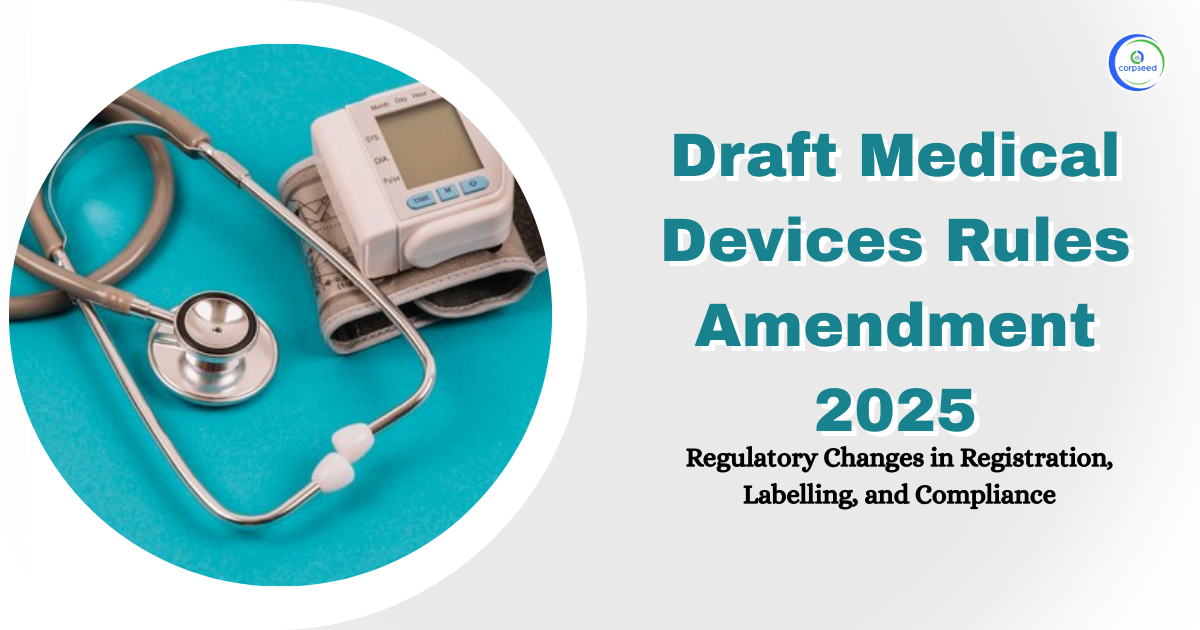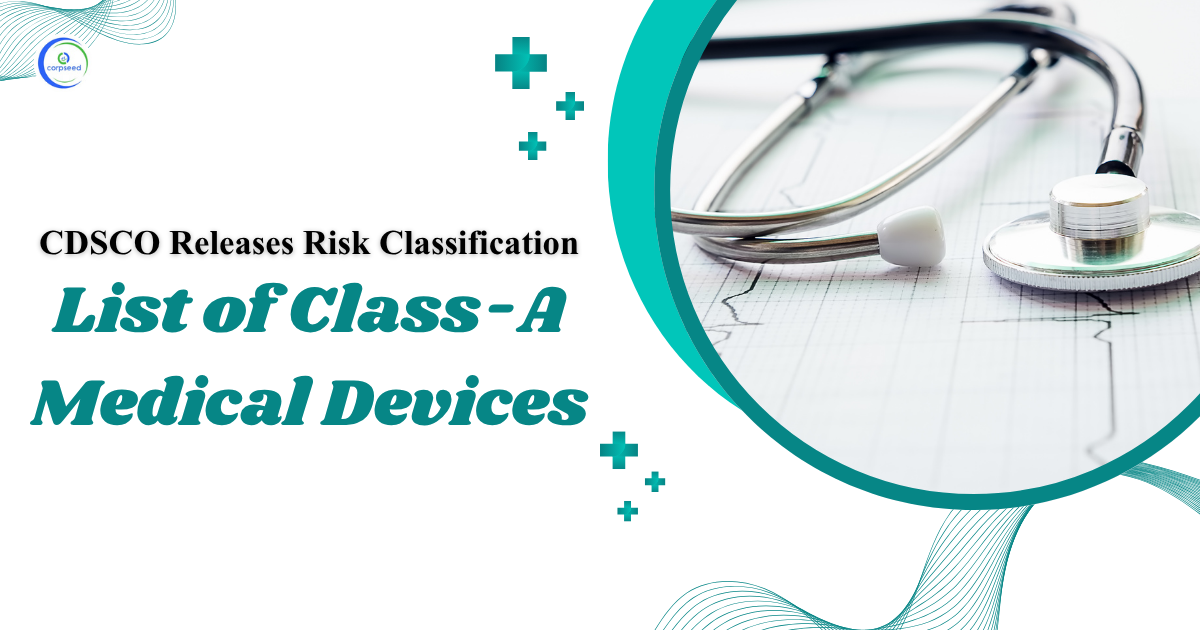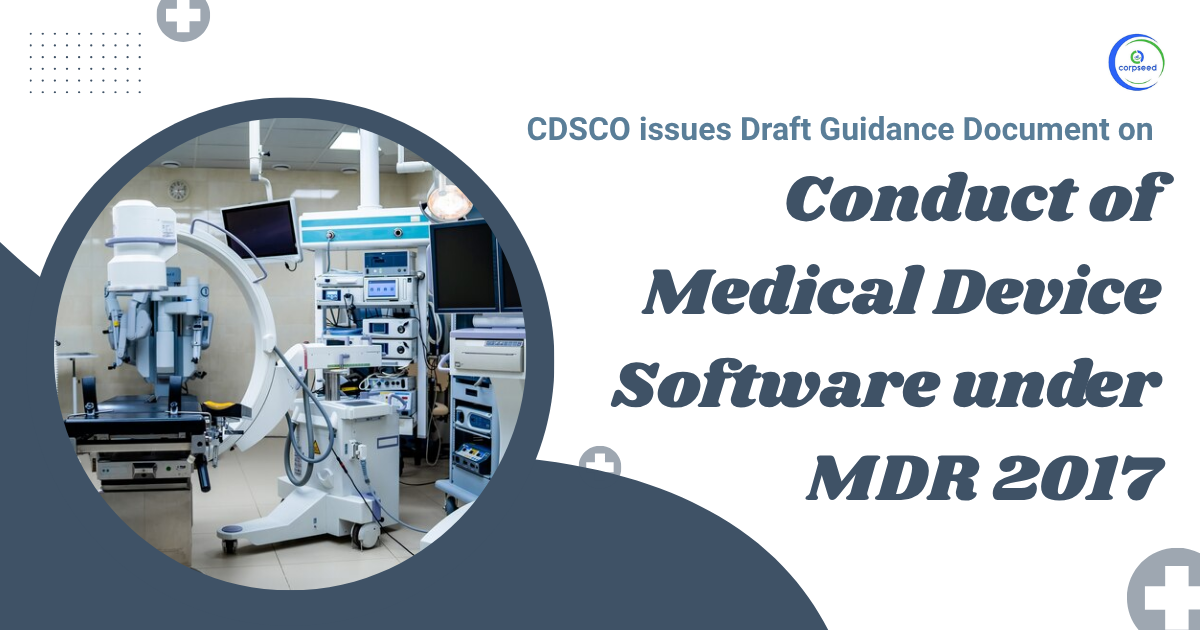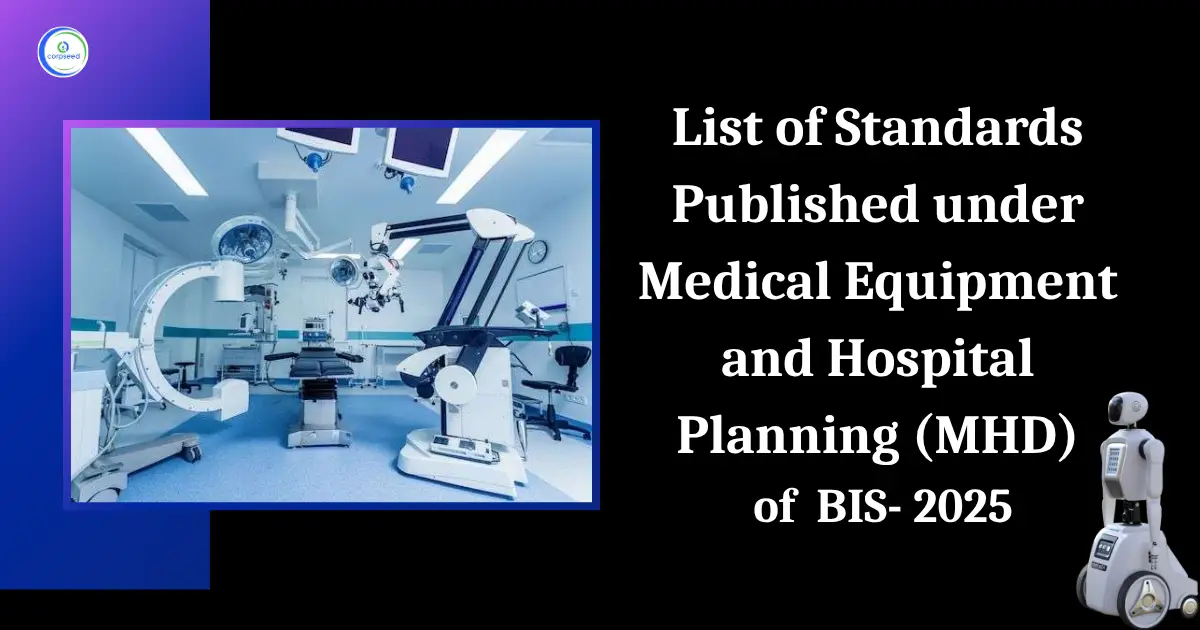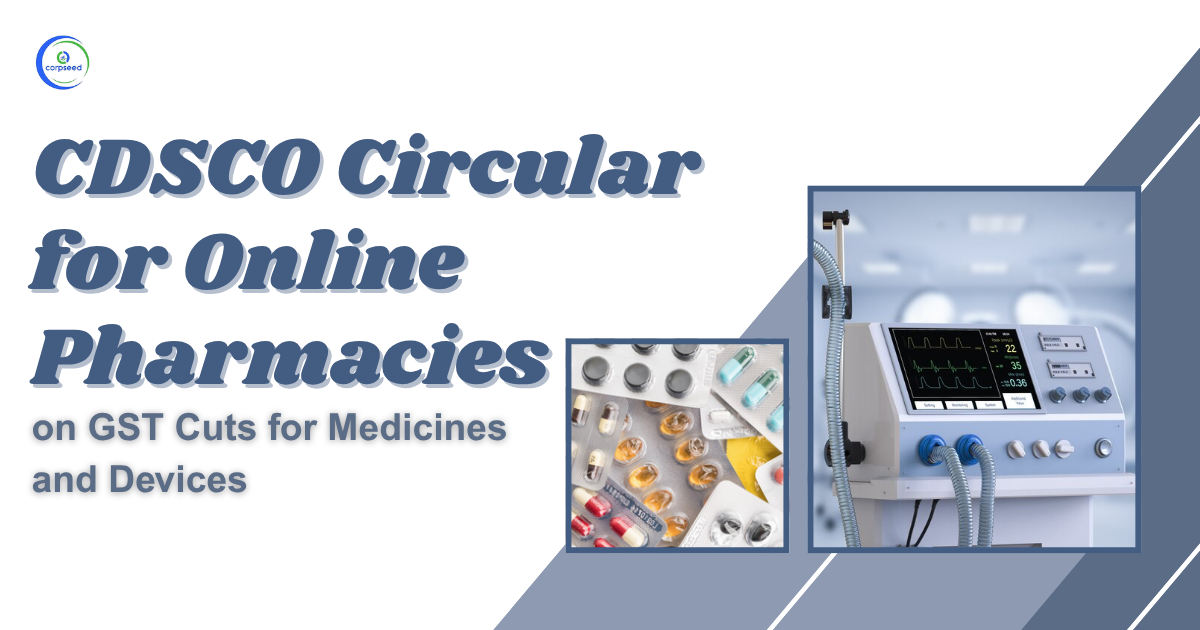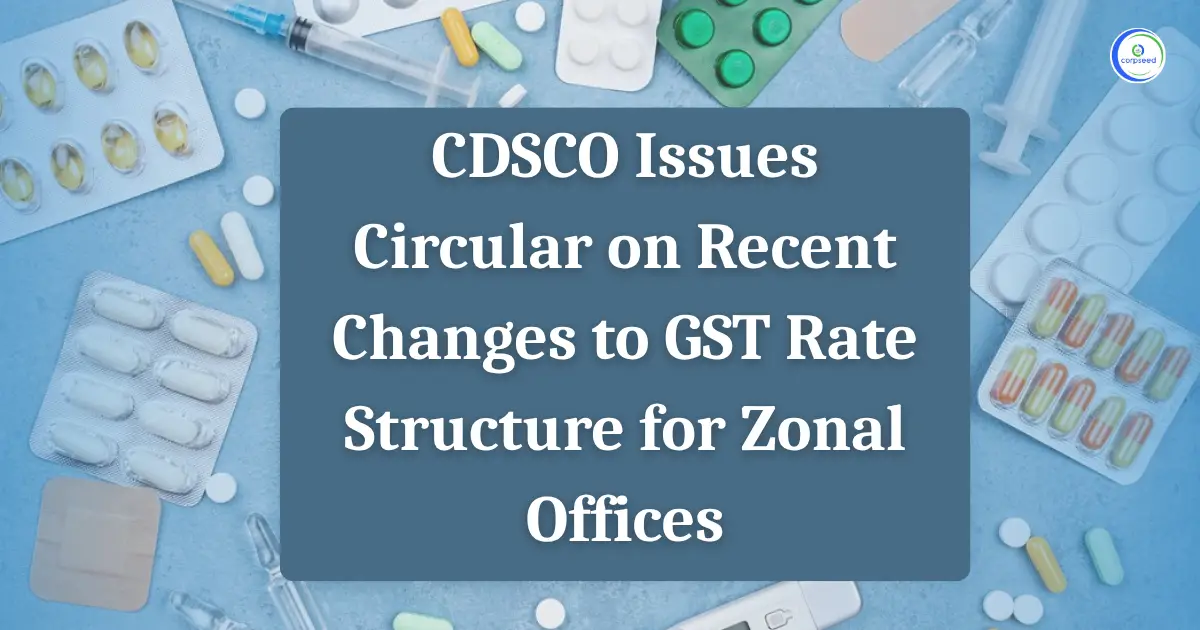A Brief Introduction of Software Medical Devices:
Software medical devices (SaMD) are devices that preform on one or more functions in medical use. In every software medical device works with the help of a hardware device in which software is embedded and medical professionals use that software to perform medical functions. Software is one of the most important elements of every hardware medical device because provides the whole functioning and interface of working on that medical device. For example, every MRI machine consists of specific software in itself that helps MRI magnets to turn or animate the X-ray control panel. In this kind of medical device, the software collects the information and organizes that data to optimize the medical procedure.
Table of Contents
- A Brief Introduction of Software Medical Devices:
- What is a Medical Device?
- Types of Medical Devices in India
- Eligibility Criteria for Medical Devices Registration/Import
- Process & Fee for Medical Devices Registration
- Documents Required to be Attached
- Time Involved & Validity for Registration
- Re-registration or Renewal of the Registration Certificate
- Post-Compliances after Receiving Registration
- How to Register any new /additional Medical Device if Medical Device Registration Obtained Already?
--------------Blog Contact Form-------------
From the 1st of October 2022, the said medical devices having risk class A and B will be covered under the licensing regime of CDSCO. Once the devices are under the scope of licensing regime of CDSCO, all the importers and manufacturers of the said devices will have to apply for the license in order to sell their products in Indian Market.
The Software medical devices category consists of total of 31 medical devices which are classified on the basis of their risk class and intended use. Out of which only class A and class B medical devices will fall under the licensing regime from 1 October 2022. The CDSCO listed medical devices are as below mentioned
| Software Medical Devices | |||
| S. No. | Name of Product | Intended Use | IMDR |
| 1 | Continuous Glucose Monitor Retrospective Data Analysis Software | Continuous glucose monitor retrospective data analysis software is intended to analyze and correlate retrospective data from a continuous glucose monitoring device. | A |
| 2 | Continuous Glucose Monitor Secondary Display | The purpose of the continuous glucose monitor secondary display is to notify another person, the follower, of the patient's continuous glucose monitoring system sensor glucose information in real-time. | B |
| 3 | Insulin Pump Secondary Display | The purpose of the insulin pump secondary display is to notify another person of the patient's insulin pump usage information in real-time. | B |
| 4 | Multivariate Vital Signs Index | Automated calculation of a summary index (or indices) based on several individuals measured vital sign inputs. Collects measured parameter inputs and automates the calculation of a summary index based on those parameters | B |
| 5 | Electrocardiograph Software for homeuse. | Device intended for home use that creates, analyzes, and displays electrocardiograph data, and can provide information for identifying cardiac arrhythmias. | B |
| 6 | Photoplethysmogra ph Analysis Software for home use. | Photoplethysmograph analysis software device for home analysis of photoplethysmograph data and provides information for identifying irregular heart rhythms. This device is not intended to provide a clinical diagnosis. | B |
| 7 | Diagnostic Software, K-Nearest Neighbor Algorithm, Autoimmune Disease | The device is intended to suggest a systemic autoimmune disease association as an aid for differential diagnosis to be evaluated in conjunction with clinical findings and other laboratory tests. | B |
| 8 | Ataxiagraph With Interpretive Software | Device used to determine the extent of ataxia (failure of muscular coordination) by measuring the amount of swaying of the body when the patient is standing erect and with eyes closed and provides interpretation or clinical implication of the measurement. | B |
| 9 | Colon Computed Tomography System, Computer Aided Detection | To assist radiologists in the review of multi-slice computed tomography (msct) exams of the colon and highlight potential polyps that the radiologist should review. | B |
| 10 | Lung Computed Tomography System, Computer-Aided Detection | To assist radiologists in the review of multi-slice computed tomography (msct) exams of the chest and highlight potential nodules that the radiologist should review. | B |
| 11 | Chest X-Ray Computer-Aided Detection | To assist radiologists in the review of chest radiographic images and highlight potential nodules that the radiologist should review. | B |
| 12 | Radiological Computer Assisted Detection/Diagnosis Software For Fracture | A radiological computer-assisted detection and diagnostic software for suspected fracture is an image processing device intended to aid in the detection, localization, and/or characterization of fracture on acquired medical images (e.g. radiography, MR, CT). | B |
| 13 | X-Ray Angiographic Imaging-Based Coronary Vascular Simulation Software Device | X-ray angiographic imaging based coronary vascular simulation software device is a device that provides an image analysis tool to assess blood flow in the coronary vascular system using X-ray angiographic imaging data. And yields simulation-based metrics for certain cardiology applications which aid clinical users. | B |
| 14 | Automated Radiological Image Processing Software | To provide automated radiological image processing and artificial intelligence-based analysis tools. | B |
| 15 | Image Acquisition And/Or Optimization Guided By Artificial Intelligence | A radiological acquisition and/or optimization guidance system is a device that is intended to aid in the acquisition and/or optimization of images and/or diagnostic signals. | B |
| 16 | Chairside dental CAD/CAM unit | Intended for computer-aided design (CAD) or computer-aided manufacturing (CAM) of dental restorations. | B |
| 17 | Software for using with mammography- combined diagnostic X-ray system | A software, which is designed to process data obtained from a combined diagnostic mammography- radiography system. | B |
| 18 | Software for public thoracic and abdominal health screening diagnostic X-ray system | A software, which is designed to process data obtained from a thoracic and abdominal public health screening diagnostic X-ray system. The resultant data are provided for diagnosis, etc. This term may involve the recording media where the software is stored. | B |
| 19 | Software for visual evoked response stimulator | A software, which is designed to process data obtained from a visual evoked response stimulator. The resultant data are provided for diagnosis, etc. | B |
| 20 | Software for auditory evoked response stimulator | Software for medical devices, which is designed to process data obtained from an auditory evoked response stimulator. The resultant data are provided for diagnosis, etc. | B |
| 21 | Software for pulmonary exercise stress monitoring system | A software, which is designed to process data obtained from a pulmonary exercise stress monitoring system. | B |
| 22 | Software for ECG recorder with real-time analysis | A software, which is designed to process data obtained from an ECG recorder with real-time analysis. The resultant data are provided for diagnosis, etc. | B |
| 23 | Software for film-recorded digital radiography | A software, which is designed to process data obtained from film-recorded digital radiography. The resultant data are provided for diagnosis, etc. | B |
| 24 | Software for dye dilution cardiac output calculator | A software, which is designed to process data obtained from a dye dilution cardiac output unit. The resultant data are provided for diagnosis, etc. | B |
| 25 | Software for urodynamic measurement system | A software, which is designed to process data obtained from a urodynamic measurement system. The resultant data are provided for diagnosis, etc. | B |
| 26 | Software for vestibular function caloric stimulator | A software, which is designed to process data obtained from a vestibular function caloric stimulator. The resultant data are provided for diagnosis, etc. | B |
| 27 | Supporting software for an external fixators treatment plan | Software that analyzes information useful for bone fracture and for correction of bone deformities based on information collected from diagnostic X-ray systems, etc. or based on information entered in a therapeutic apparatus, and supports the preparation of a treatment plan with external fixators. | B |
| 28 | Diagnostic supporting software for diabetes | A software that supports analysis and assessment of therapeutic effects of diabetes treatment by processing information collected from a blood glucose meter, etc into the data related to changes or trends in blood glucose levels. | B |
| 29 | Quantitative calculation software for IGC test | Software that performs quantitative calculation of blood flow in relation to a brightness time change based on information obtained from video images of indocyanine green angiography. | B |
| 30 | Analyzing software for hemodynamics or cardiac function | A medical device program that analyzes hemodynamics or cardiac function based on information obtained from diagnostic imaging systems, etc., and uses the results for diagnosis. | B |
| 31 | Supporting software for root canal treatment | Software for medical devices, which is used to support the preparation of a treatment plan based on information collected from diagnostic imaging systems, etc. in the root canal treatment. | B |
Central Drugs Standard Control Organisation:
India is growing as one of the nation's leading in pharmaceutical businesses and is among the top ten nations in terms of the pharmaceutical industry. Several factors such as a large population, growing health awareness, affordable medical facilities, and better research facilities have given rise to the manufacturing and development of the pharma business in India. However, with the increasing scope for the growth of the pharma industry in India, there are possibilities for the sale/purchase of medical equipment & device illegally or without jurisdiction. Therefore, the Government of India has established the Central Drug Standards Control Organization (CDSCO), which is the primary legislative body and has been responsible for the regulation, control, and management of pharmaceuticals and medical devices in India apart from the appointment of the Drug Controller General of India (DCGI), and has conferred the responsibility of undertaking assessment, approval, and regulation of further compliances(import, export, sale, distribution) in the matters of medicinal drugs and medical devices(including any existing or any new) drugs/devices in accordance with the provisions of the Drugs and Cosmetics Act 1940.

What is a Medical Device?
According to the latest definition as provided under the Medical Devices Amendment rules 2020, as notified on 11.02.2020. However, taking care of circumstances the government has exercised its powers to include more categories by widening the scope of the definition of “Medical Device” under the Act. It states-
"Devices used in general medical practice such as medical apparatus, instruments, implants appliance, etc., which are either used individually or in combination, and are intended to be specifically applied for human beings or animals and are further intended to obtain the desired function by such means and for such purposes as provided below, but is not intended to meet the primary intended action on the human body or animals by any pharmacological or immunological or metabolic means-
- Analysis, prevention, observation, treatment, or mitigation of any disease or disorder;
- Analysis, observation, treatment, mitigation, or support for any injury or disability;
- Examination, replacement or alteration or support in findings of the anatomy or a physiological process;
- For supporting or sustaining life;
- Decontamination of medical devices; and
- Conception-related equipments & devices.
Therefore, every manufacturer or importer or of any medical devices in India shall be required to obtain registration as per the provisions of the Drugs and Cosmetics Act 1940. Any failure to comply with the same may invite legal action including penalty & prosecution under the Act.
Types of Medical Devices in India
Provisions related to the import, manufacture, sale & distribution of medical devices are regulated under the provisions of the drug and cosmetics Act 1945. Under the New Medical Rules 2017, all medical devices have been classified into four different categories depending on their usability & risk involved as provided below.
- Class A:- Low-risk devices like a thermometer, tongue depressors, etc.
- Class B:- Low moderate risk like Hypodermic Needles, suction equipment, etc.
- Class C:- Moderate high-risk devices like Lung ventilators, etc.
- Class D:- High-risk devices like Heart valves, implantable devices, etc.
Where Class A & B devices are considered to be less risky and moderate devices, for which the application to manufacture has to be filed to the State Licensing Authority. Whereas Class C &D are considered to be high and very High-risk devices and the application for these has to be filed to the Central Licensing Authority of India.
Eligibility Criteria for Medical Devices Registration/Import
The provisions related to activities such as the Import, manufacture, sale, and distribution of medical devices have been regulated under the provisions of the Drugs & Cosmetic Act 1940 & Rules 1945. Therefore, any person/firm/enterprise, etc. holding a wholesale drug license and/or manufacturing license issued under the Drugs and Cosmetics Act, 1940 and Rules 1945 could make an application for Registration and import of medical devices into India.
Process & Fee for Medical Devices Registration
Types of Medical Devices Registration
- Registration/Import of any existing medical device;
- Registration /import of any new medical device
Step 1: Determine whether your medical device is under notified list or not
The CDSCO authority has provided a list of notified medical devices that need to compulsorily obtain registration under the Drugs and Cosmetics Act 1940 and in accordance with Medical devices rules 2017. However, there may be any medical devices that have not been expressly notified by the CDSCO authority, or in case of new medical equipment, the manufacturer/importer shall be required to obtain a NOC in such cases. For instance, Blood Grouping Sera Ligatures, Sutures, Staples Intra-Uterine Devices (Cu-T), Condoms, Tubal Rings, Surgical Dressing, Umbilical Tapes, Blood / Blood Component Bags do not need registration, whereas devices such as spinal needles, cochlear implants, syringes, and needles, heart valves, endotracheal tubes and catheters among others should undergo registration provides with the CDSCO.
Step 2: Appoint an Authorized representative (in case of a Foreign Entity)
For a foreign business manufacturer entity, it shall be necessary to appoint an authorized business entity in India, who shall be the contact person for the inspection authorities during the process, assist in device approvals, and registrations process, and vigilance adverse event reporting. The Indian Authorization should hold a wholesale drug license in forms 20B& 21B.
Step 3: Fill out the application form for Medical Device Registration
In the next step, the manufacturer/importer for MD shall be required to submit the registration form of a regulatory dossier, along with all the prescribed documents along with the prescribed fee on the CDSCO portal to the DGCI (Drugs Controller General of India) by logging on to the online CDSCO portal and signing into the portal.
Following forms along with applicable govt. fees have been provided below, which shall be required to be paid through payment challan-
| Applicant Type | Class of MD | Application Form | License Form |
| Importer | A,B,C,D | MD-14 | MD-15 |
| Manufacturer | A B | MD-3 | MD-5 |
| Manufacturer(Loan License) | A B | MD-4 | MD-6 |
| Manufacturer | C, D | MD-7 | MD-9 |
| Manufacturer(Loan License) | C, D | MD-8 | MD-10 |
However, in the case of new equipment or medical device-
| Application Type | Class of MD | Application Form | License Form |
| Importer Clinical Investigation | A,B,C,D | MD-22 | MD-23 |
| Import License | A,B,C,D | MD-26 | MD-27 |
| Test License(for importer) | A,B,C,D | MD-16 | MD-17 |
| Manufacturer (Clinical investigation) | A,B,C,D | MD-22 | MD-23 |
| Manufacturer License | A,B,C,D | MD-26 | MD-27 |
| Test License | A,B,C,D | MD-16 | MD-17 |
Further, each application shall be supported with the list of documents and the requisite fee as provided in the online portal of CDSCO-
| Type of License | Class of Device | Applicable Regulation | Govt. Fee |
|
For Manufacturing/Loan License
|
A or B; | 20(2) | Rs. 5000 Rs. 500 |
|
For Manufacturing/Loan License
|
C or D; | 21(2) | Rs. 50,000 Rs. 500 |
|
For Import License(other than IVD)
|
Class A | 34(2) | 1000 Dollar 50 Dollar |
|
Import License(other than IVD)
|
Class B | 34(2) | 2000 Dollar 1000 Dollar |
|
Import License (in IVD)
|
Class A or B | 34(2) | Rs. 1000 Rs. 10 |
|
Import License (other than IVD)
|
Class C or D | 34(2) | 3000 Dollar 1500 Dollar |
|
Import License(in IVD)
|
C or D | 34(2) | 3000 Dollar 500 Dollar |
Step 4: Obtain a Certificate of Registration in the Prescribed form
Once the application is submitted on the CDSCO portal, the DGCI registration authority may send a query through an inquiry letter to the manufacturer or from the authorized representative of the importer, along with the timeline within which the query should be answered and sometimes, may also ask for a technical presentation On satisfaction the authority may issue a license in such form as provided in the above list. After obtaining registration, the manufacturer or his authorized representative may apply for an importer license.
Documents Required to be Attached
- Form 40
- ISO 13485 certificate
- Full Quality Assurance Certificate
- CE Design Certificate
- Undertaking that all information provided is authentic
- Either a Free Sale Certificate or a Certificate from the Foreign Government
- Certificate of Marketability from GHTF (Australia, Canada, Japan, the European Union, and the United States);
- Plant Master Report
- Device Master File
Time Involved & Validity for Registration
If the DGCI doesn’t ask for a Technical Presentation or Subject Expert Committee (SEC) audit, it takes around 6-9 months to obtain a Medical Devices Registration. In cases where Technical Presentation or Subject Expert Committee (SEC) audit, is required, it may take additional 3-6 months.
Once obtained the Registration Certificate shall be valid for a total period of 3 years from the date of issue of registration unless suspended or cancelled by the DGCI authority for proper causes.
Re-registration or Renewal of the Registration Certificate
The application for renewal of the MD registration certificate shall be made at least nine months from the expiry of the registration certificate. Though there are no additional requirements for the renewal of registration, it shall be necessary for the certificate holder to provide a copy of the Plant Master File (PMF) and Device Master File (DMF), where there are no changes in the PMF and DMF,
Post-Compliances after Receiving Registration
Though there are not many compliances in place about the registration certificate, it shall be compulsory for the certificate holder to-
- In case of any change that has taken place about the constitution of the firm and/or address of the registered office/factory premises, the MD manufacturer/authorized representative of the importer to intimate the licensing authority regarding the same in writing;
- In case any such change has taken place, the existing registration certificate shall be valid for a maximum period of three months from the date on which the change has taken place, and during this time, the manufacturer/authorized representative shall be required to obtain a fresh Registration Certificate;
How to Register any new /additional Medical Device if Medical Device Registration Obtained Already?
In case an importer wants to obtain registration for manufacturing of any additional manufacturing device, then such person shall be required to obtain an endorsement to the existing Registration Certificate along with the prescribed documents holding that manufacturing of an additional device is being undertaken in the manufacturing site as provided in the registration certificate along with a fee of 1000 dollars fee for each additional device.
Drug License
A drug license is an official permission granted to individuals or companies that manufacture, distribute, and sell drugs in India. It ensures adherence to the safety and quality standards of the regulatory authorities that ensure public health.
Medical Devices Import/Manufacturing
CDSCO online registration is a process that ensures that all the drugs, medical devices, and cosmetics in the market are safe, reliable, and must have passed quality standards. Importers, manufacturers, and others must register under the CDSCO for a certificate if they are working in this field.
Medical Devices Import
The CDSCO is responsible for medical device registration in India. This registration guarantees that all devices are safe, of high quality, and comply with regulatory standards. This registration not only protects patients but also supports global trade.
This portion of the site is for informational purposes only. The content is not legal advice. The statements and opinions are the expression of author, not corpseed, and have not been evaluated by corpseed for accuracy, completeness, or changes in the law.
BOOK A FREE CONSULTATION
Get help from an experienced legal adviser. Schedule your consultation at a time that works for you and it's absolutely FREE.




